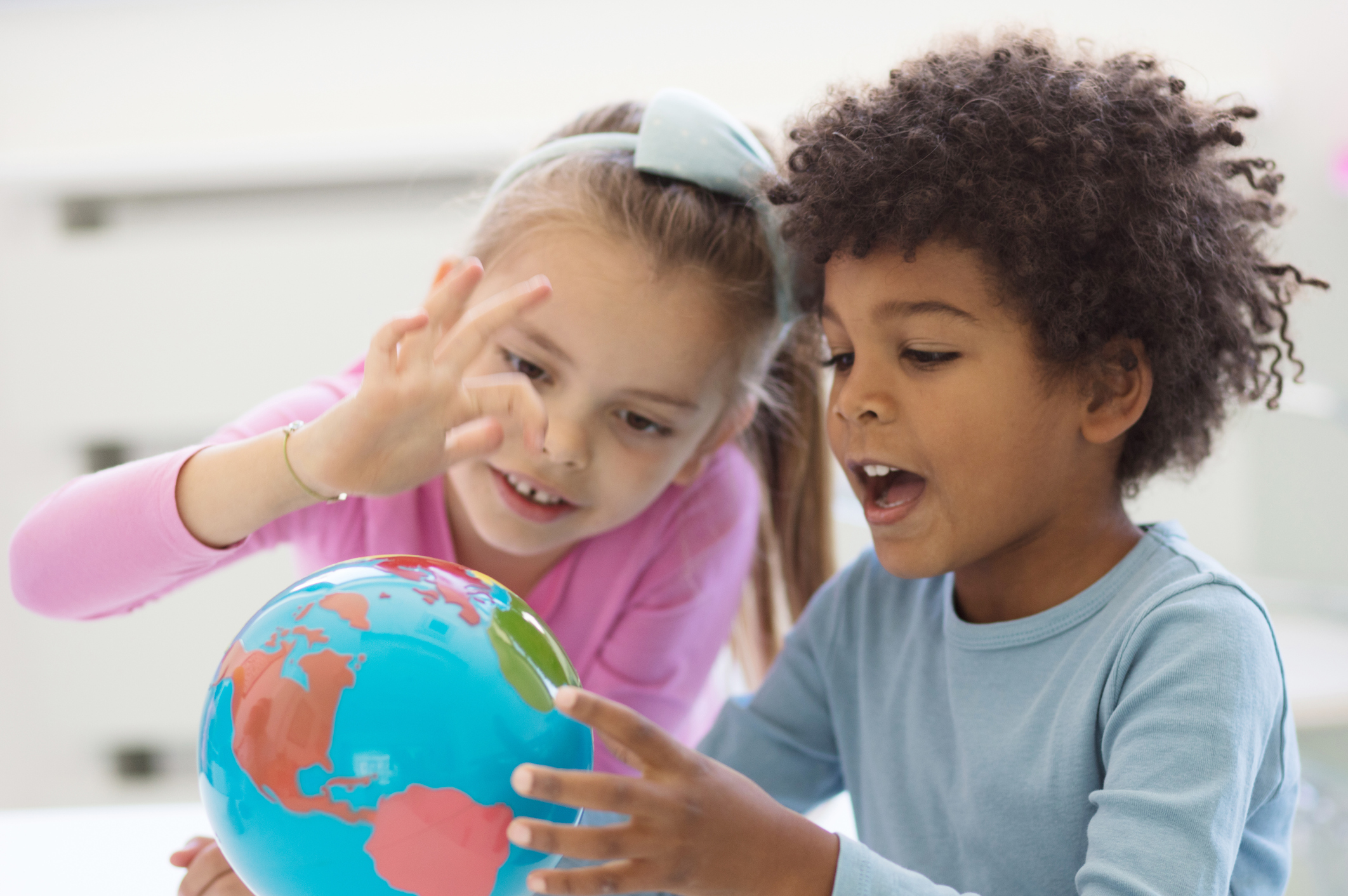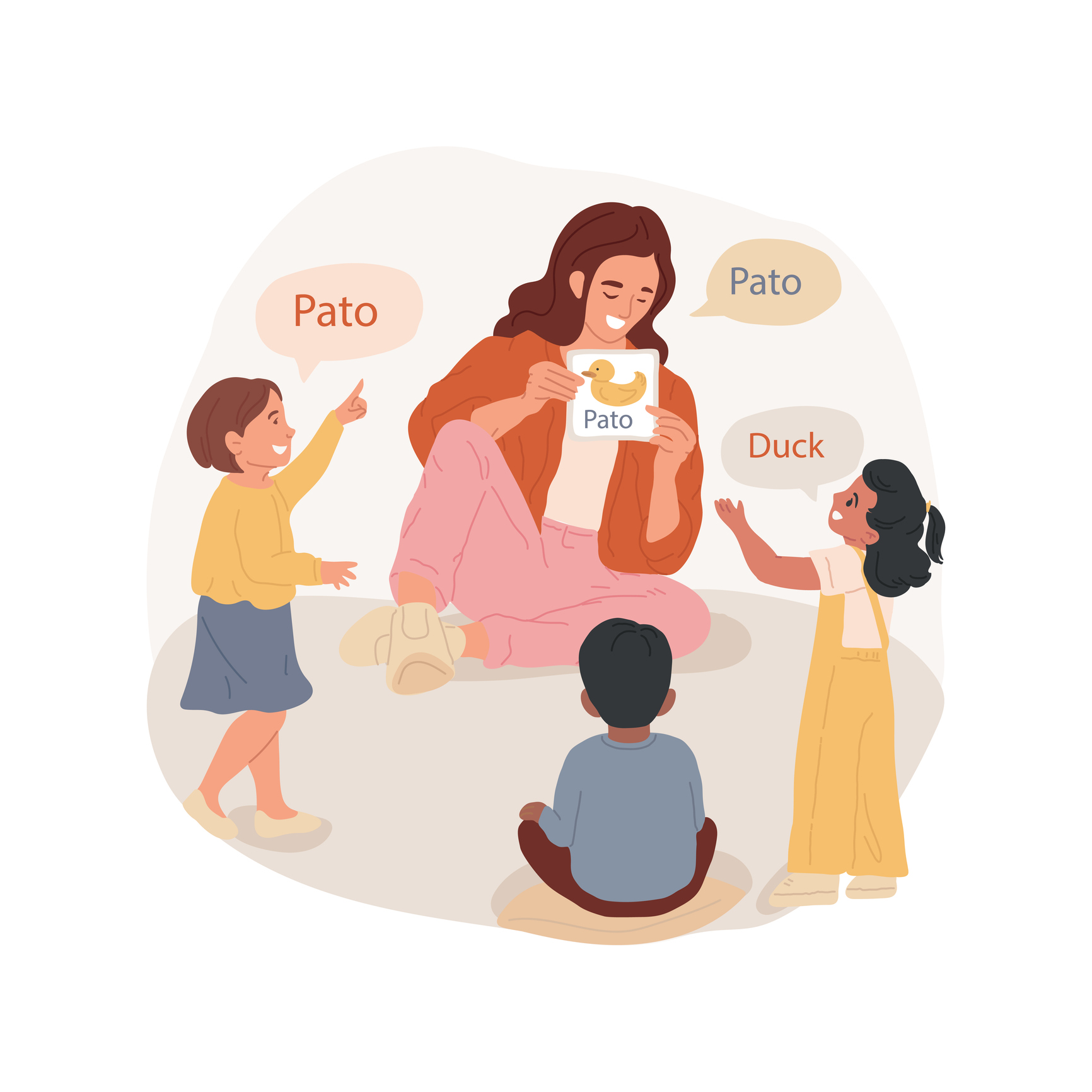How To Tackle Language Barriers in Early Years

Nowadays, it’s common for pre-school teachers to experience language barriers with their students and their families. This article explores some of the most common types of language barriers and ways to overcome them.
Effective communication skills are crucial for healthy childhood development. Only when a child learns to fully express themselves and their feelings can they build healthy relationships with their relevant caregivers and form connections between who they are and the world around them.
Children experience challenges if they have problems speaking and understanding the language that is being used - they may not understand what others are saying, be able to carry on a conversation, or share their thoughts and feelings. They may struggle to read body language and interpret gestures properly. In addition, they may use the wrong tenses, say words in an incorrect order, or have vocabulary gaps and leave important words out.
These issues can lead to frustration and emotional stress, and can be a serious hindrance to child development.
It’s therefore crucial for early childhood educators to help close the communication gap by providing dedicated support to families with language barriers.
Common Language Barriers

1. Not Being a Native English Speaker
Babies learn how to communicate by mimicking those around them. And if their parents’ primary language is not English, it can create a language barrier by the time they enter pre-school. Understandably, difficulties communicating with the family on the part of the teacher about the child’s needs can occur if the family does not speak English.
2. Bilinguality
Some children are raised to learn English as a second language so they may experience language fluency delays. This means their fluency in English is not at the same level as a child whose first language is English. These children are learning double the amount of vocabulary and it takes a longer time for them to be fluent in both languages.
3. Selective Mutism
Selective mutism is a childhood anxiety disorder where a child does not speak in certain settings but will speak in other settings. The child may have issues making friends, having fun at social events and performing at school. This can be troublesome as they are unable to ask for help and have their needs met.
4. Cultural differences
An important factor that affects how children develop their language skills is the culture they are raised in. Parents from different cultures talk to their children differently. They may speak with an accent and use idioms or phrases that are unique to their culture. These cultural differences affect how children’s beliefs and behaviors are formed.
This shapes a child’s conversation skills, how they think about themselves, and how they relate and interact with others. If these cultural differences are not acknowledged, recognized and respected, it can create interpersonal conflict between families and preschool early years practitioners or teachers.
5. Deafness

If a child has hearing issues, it can have negative effects on the development of their speech and language skills. This not only creates barriers in understanding but it affects their speech too.
When parents, caregivers and professionals spot these barriers and intervene early, the communication barriers can be effectively managed.
Ways to Overcome Language Barriers

1. Use Sign Language
Signing can be helpful in overcoming miscommunication and improving language skills. From naming objects to giving instructions, sign language is beneficial for children who have issues speaking and expressing themselves. It’s also a universal language that everyone involved in the child’s life can understand, and doesn’t involve cultural nuances.
One of the language programs that can be easily adopted by caregivers and educators is Makaton. It uses signs, symbols and speech to help people communicate. Using all three methods gives someone different ways to express themselves. If they have speech issues, they can use signs. If they don’t want to sign, they can use symbols.
2. Encourage Talking, Reading, Singing and Playing
Teachers can encourage parents, grandparents and caregivers to talk, read, sing and play in their native language and in English.
Talking to the child about what is going on in the present moment, narrating your actions in plain language, and naming objects can be effective ways for them to make connections between what they’re seeing and what they’re hearing.
Spending time reading books together can help improve their vocabulary and grammar. Point at the pictures and ask them what they see. It can help improve their language skills and boost their confidence in sharing their ideas and what they think.
Music is a universal language and children have a natural love for music and movement. Listening to songs and singing with the child can be a fun and active way for speech and language skills to develop and flourish, especially in the case of a child who’s language barriers are there because of confidence.
From social media, to educational YouTube videos, to child-friendly podcasts, there are numerous games and activities that can help a child and their families become English learners.
It’s important to ensure children have fun and find joy while strengthening their language skills.
3. Use Online Translation Tools

In a world where the internet is at our fingertips, and where children are learning how to use online tools at a younger age, accessing online translation tools are easy. If you don’t own a tablet or computer at home, why not speak to your child’s preschool teacher to see if they can lend you some electronic resources? Using an online translator tool such as Google Translate or a translation service can help early childhood educators communicate with parents about their child’s needs and learning progress. It’s an effective way to bridge the gap between different cultures and different languages.
In addition, using translation tools can help introduce new words and phrases to the child. It can increase a child’s vocabulary in English and their native language, improve word order, identify differences in sentence structure, and learn about how different languages can convey similar messages.
4. Use Your Body Language
Body language is the non-verbal part of communication that includes our tone of voice, facial expression, gestures and body position. Sometimes, our body language can give a fuller picture of how someone is feeling and thinking than the words they are speaking - as the saying goes, actions speak louder than words.
Facial expressions can be used to express happiness, fear, sadness, anger and interpretations are similar across the world and different cultures. Even the position of someone’s arms and legs can help determine how they are feeling and what they are thinking. Having their arms crossed could mean they feel protective or defensive. Having their legs crossed away from someone may mean they feel uncomfortable or prefer privacy.
Ultimately, parents, family members, teachers and other caregivers can overcome any language barrier at hand!

